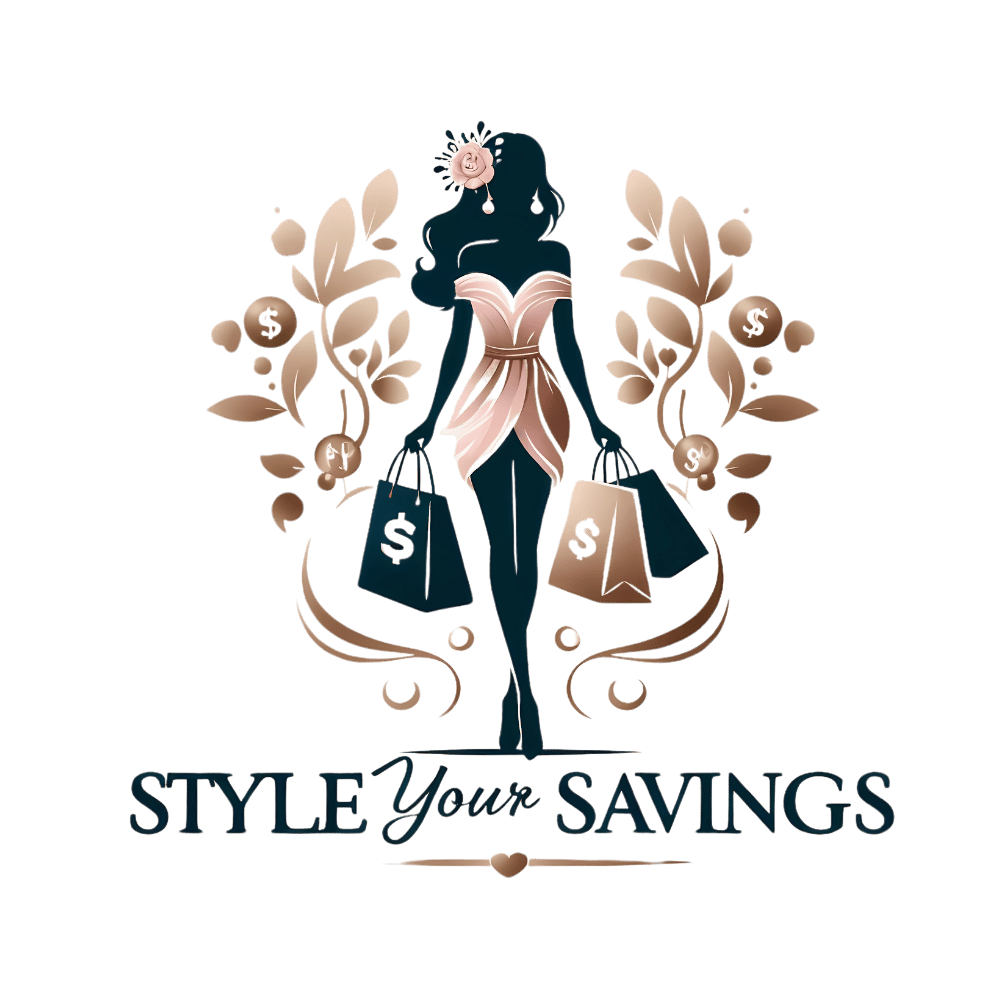
Fashion and finance, at first glance, might appear separate. Fashion about aesthetics and self-expression, finance about numbers and wealth management. However, scratch beneath the surface, and you’ll discover a surprising number of parallels. Both demand meticulous planning, a sharp eye for detail, and a distinct sense of personal style, whether it’s curating a wardrobe or managing your monetary resources.
In this article, we go into more detail from Part 1, where we unravel the intricate connections between the world of haute couture and the realm of personal finance. You’ll learn how the principles that guide smart sartorial choices can be seamlessly applied to enhance your financial well-being, empowering you to “dress” for success in all aspects of your life.
The Wardrobe Budget: Tailoring Your Financial Plan
Just as every stylish individual understands the importance of a wardrobe budget, a well-structured financial plan begins with a clear understanding of your income and expenditures. This initial step involves tracking where your money comes from and where it goes. Think of it as taking inventory of your current wardrobe – identifying the essential pieces, the occasional splurges, and perhaps those items that no longer serve you.
In the fashion world, you might strategically use a larger portion of your budget to foundational items like a versatile blazer or a pair of high-quality trousers, recognizing their longevity and adaptability. Similarly, in personal finance, a significant portion of your budget will naturally be dedicated to essential needs such as housing, food, and transportation.
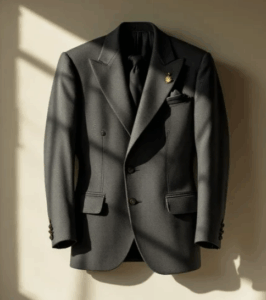
The key lies in achieving a harmonious balance. Using trendy accessories to inject personality into your classic outfits, your financial budget can also include discretionary spending on entertainment, hobbies, and dining out. However, it’s important to ensure these “accessories” don’t overshadow the core of your financial wardrobe.
Here’s where the “cost-per-wear” principle becomes invaluable. In fashion, evaluating the cost of an item against how frequently you’ll wear it helps justify a higher price tag for a durable, timeless piece. Meaning paying more for a higher priced item that will last you a long time, can justify the higher price tag. The same logic applies to financial decisions. Investing in a high-quality, energy-efficient appliance, for instance, might have a higher initial cost but could lead to significant savings on utility bills over its lifespan, ultimately boasting a lower “cost-per-use.” Therefore, it might be worth it to spend more on the energy-efficient appliance.
Distinguishing between needs and wants helps to curate a wardrobe of essentials versus indulging in fleeting trends. Prioritizing essential spending ensures your financial foundations are secure, while mindful discretionary spending allows for enjoyment. Regularly reviewing your budget (when you clean out your wardrobe for items that need updating or decluttering) is essential for staying on track with your financial goals. Consider it your annual “collection” review, allowing for necessary adjustments based on life changes and evolving priorities. You can review or create a budget on a monthly basis, which also helps you to track spending and income.
The Investment Piece: Building a Timeless Financial Portfolio
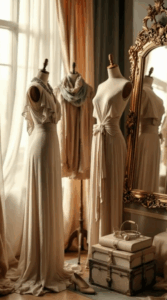
In the world of fashion, an “investment piece” transcends fleeting trends. It’s a meticulously crafted item, often made from high-quality materials, designed for longevity and enduring style. Think of a classic leather handbag or a well-tailored coat – items that retain their value and elegance over time.
In personal finance, investments play a similar role. They are strategic allocations of capital with the expectation of generating returns over the long term. These “timeless textiles of finance” are made up of a diverse range of assets, such as well-diversified stock portfolios and the tangible value of real estate property to the more conservative nature of bonds.
I’m also guessing you wouldn’t build your entire wardrobe on trendy, disposable items, right?
So, a solid financial portfolio emphasizes diversification. Spreading your investments across different asset classes mitigates risk, ensuring that your financial “wardrobe” remains resilient against market fluctuations.
Understanding your risk tolerance and time horizon can be compared to knowing your personal style and the occasions you’re dressing for. A younger investor with a longer time horizon might be comfortable with more growth-oriented risky investments, while someone closer to retirement might prioritize more conservative, income-generating assets.
Seeking guidance from a qualified financial advisor is like consulting a personal stylist with expertise in curating a wardrobe that aligns with your individual needs and aspirations. They can provide invaluable insights into the best “investment pieces” for your financial goals and help you navigate the complex financial landscape.
Trendy Item: Navigating the Allure of Financial Fads

The fashion world is constantly abuzz with the latest trends – the must-have colors, sunglasses, hats and accessories of the season. While these trendy items can be fun to experiment with, they often have a limited lifespan and may not hold lasting value.
Similarly, the financial world is susceptible to its own set of “trendy items”. Cryptocurrency and non-fungible tokens (NFTs) are recent examples. While these can offer exciting possibilities, they often come with significant risks and volatility.
The parallel between “fast finance” and “fast fashion” is striking. Both can be alluring and offer the thrill of novelty, but neither typically forms the foundation of long-term success.
A person must learn to approach these trendy investments with caution, conducting thorough research and understanding the underlying fundamentals before allocating capital. In my opinion it should be treated like carefully selected, inexpensive accessories – a small part of your overall financial “look” that doesn’t compromise the integrity of your core holdings.
The Classic Look: Building a Foundation of Financial Security
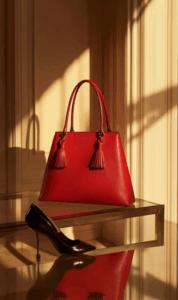
A classic wardrobe relies on timeless pieces that never go out of style – the little black dress, the tailored suit, the red handbag. A robust financial plan is built upon fundamental, reliable “products.” These are the cornerstones of financial security, providing a stable base regardless of market fluctuations or fleeting trends.
Savings accounts, emergency funds, and retirement accounts (such as a 401k) in the US or a retirement annuity in South Africa) represent the enduring elegance of personal finance. They may not generate the rapid excitement of trendy investments, but their reliability and long-term value are undeniable.
An emergency fund acts as your financial “go-to outfit” for unexpected events – a job loss, a medical expense, or an unforeseen home repair. It provides a crucial safety net, preventing you from having to liquidate long-term investments or incur high-interest debt during challenging times.
Responsible debt management is like making sure your clothes fit well and doesn’t restrict your movement. Avoiding excessive debt and managing existing liabilities frees up cash flow and improves your overall financial well-being.
The power of compounding, particularly within retirement accounts, is the financial equivalent of a timeless piece that only gets better with age. Over time, the returns on your investments generate further returns, leading to significant growth without requiring additional contributions.
They are the foundational fabrics of your financial wardrobe, ensuring you are always appropriately “dressed” for the future.
Dressing for Success: Cultivating Your Unique Financial Style
Ultimately, “dressing for success” in personal finance, like in fashion, involves a thoughtful and deliberate approach. It requires defining your financial goals – your desired “look” – and developing a plan to achieve them.
Understanding your financial values and aspirations is key to cultivating your unique financial persona. Are you aiming for early financial independence – a chic and minimalist approach? Or are you focused on building a legacy of wealth – a more layered and sophisticated financial wardrobe?
The confidence that comes from having a solid financial plan and a clear understanding of your finances is similar to the self-assurance you feel when wearing an outfit that makes you look and feel your best. Taking control of your financial destiny empowers you to navigate life’s challenges with greater security and peace of mind.
Just as your personal style evolves over time, your financial plan should also be dynamic. Regularly reviewing and adjusting your budget, investments, and financial goals ensures that your financial “wardrobe” continues to align with your changing circumstances and aspirations.
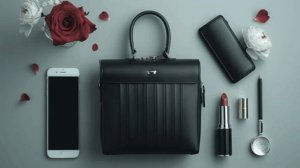
Bonus Style Tips for Financial Flourishing:
- Declutter Your Finances: declutter your wardrobe of items you no longer wear. Identify and eliminate unnecessary expenses that no longer serve your financial well-being.
- Accessorize with Knowledge: Continuously educate yourself about personal finance through books, podcasts, reputable online resources, and workshops. Knowledge is the most valuable accessory in your financial wardrobe.
- The Right Fit Matters: Choose financial products and strategies that align with your individual circumstances, risk tolerance, and comfort level. What works for one person may not be the right “fit” for another.
- Seek a Financial Tailor: Don’t hesitate to seek professional advice from a qualified financial advisor who can act as your personal “financial tailor,” helping you create a customized plan that suits your unique needs and goals.
- Maintain Your Financial Wardrobe: Regularly review your financial health, track your progress towards your goals, and make necessary adjustments. Just like caring for your clothes ensures their longevity, actively managing your finances safeguards your future.
- Dress for the Occasion: Understand that different life stages and financial goals may require different financial “outfits.” Your financial plan might look different in your 20s compared to your 50s.
- Invest in Quality over Quantity: Focus on building a solid financial foundation with quality investments and strategies rather than chasing a multitude of potentially risky or unnecessary financial products.
- Don’t Be Afraid to Alter: Just as you might tailor a garment for a perfect fit, be prepared to adjust your financial plan as your circumstances change. Flexibility is key to long-term financial success.
In conclusion, the worlds of fashion and finance are more connected than we realise. By applying the principles of thoughtful planning, attention to detail, and a personalized approach, you can “dress” yourself for financial success, building a secure and stylish future. Remember, with the right mindset and the right tools, anyone can cultivate a financial style that empowers them to achieve their goals and navigate the runway of life with confidence and flair.
